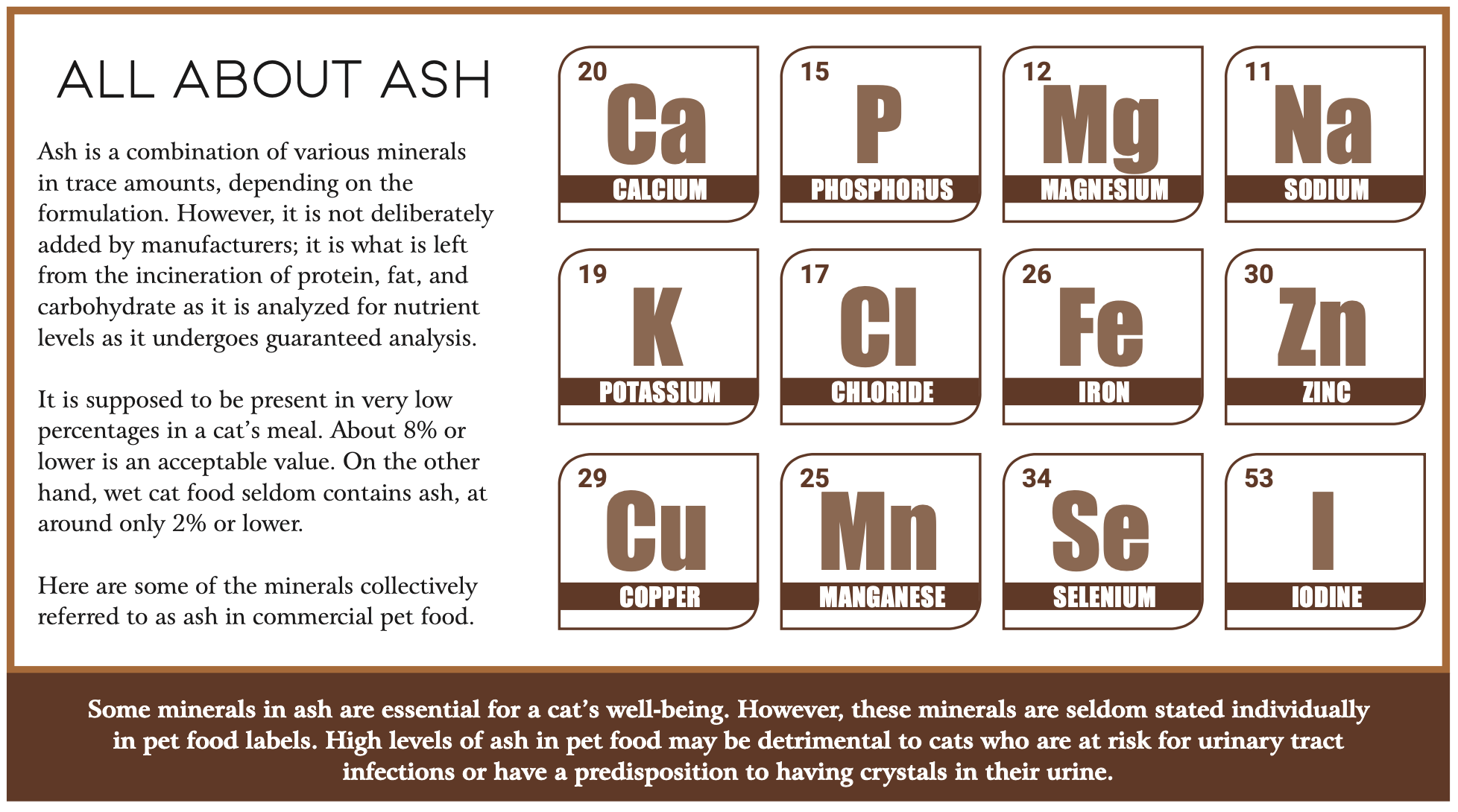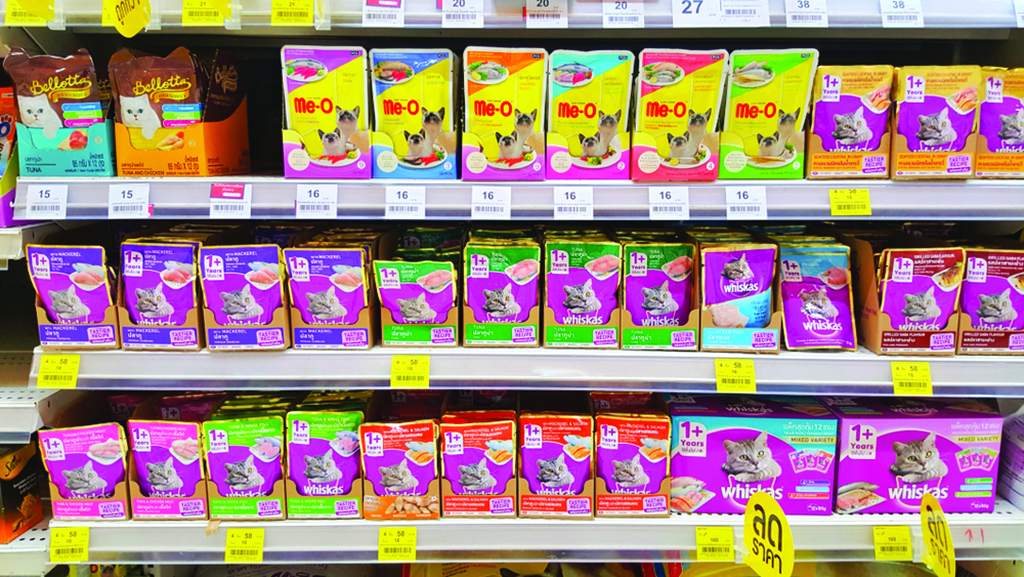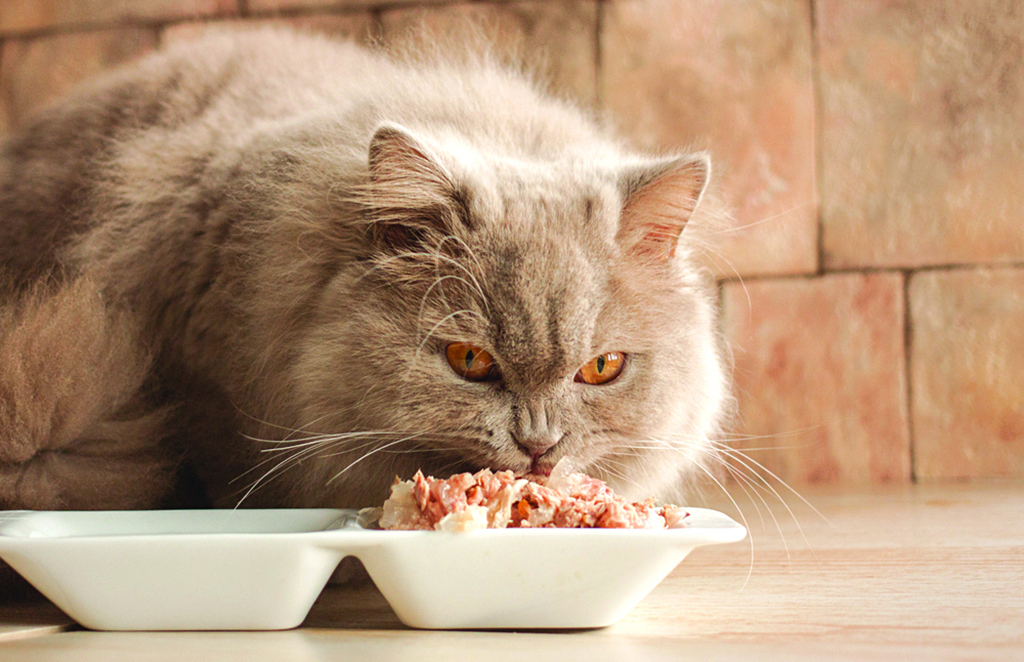MAKE SMART CHOICES FOR YOUR FELINE COMPANIONS
Commercial pet food is the go-to solution for a feline companion’s dietary needs. Cat food brands are often labeled as having “complete nutrition”, but do they really provide what a cat needs? Not all brands are created equal, so it is important to know what to look out for.
WHAT CATS NORMALLY EAT
Cats are carnivores who primarily rely on animal sources for their nutritional needs. They are natural predators to smaller animals, such as rodents, birds, and other animals.
After cats decided to live beside (and with) humans, cats did not change their habits, so their nutritional needs and hunting instincts remained similar to their wild counterparts. But now, more and more commercial food is available for cats.
Cats remain hunters, even in urban areas. They hunt small animals for fun or food, even when commercial pet food is often available in their homes. Prey animals contain high levels of protein and fat, so pet parents should look for high levels of these nutrients in commercial pet food.
WHAT’S IN COMMERCIALLY AVAILABLE FOOD
The many brands of cat food available in stores are especially formulated to meet their nutritional needs, and include both staple food and treats. Not all brands are created equal and the sources of nutrients may vary, depending on their formulation.
They come in many forms, such as dry, wet, semi-moist, and different types of treats. Dry and wet food are the most common, while semi-moist food is used for supplemental feeding.

DRY VERSUS WET
Both dry and wet food have their own pros and cons. Generally, dry food is more nutrient-dense than wet food per serving, because it has very low moisture levels, giving more room for nutrients. On the other hand, wet food nourishes while providing enough water for a cat. Using them alternately is better than using just dry food.
If you check the label carefully, there is always a reminder for humans to make water available to their animal companions at all times, especially when feeding them dry food, because it doesn’t have enough water. Wet food, on the other hand, has more water content, which means it has fewer nutrients per volume. When choosing wet food, opt for those with higher protein content from animal sources and with the least amount of fillers, whether or not they contain beneficial nutrients.
MORE ON NUTRITION FACTS
Nutrition facts provide vital information, and in the Philippines, they have to follow the standards set
by the Food and Drug Administration (FDA) and the Bureau of Animal Industry (BAI). The information is often presented as a list or table in commercial food labels. They help when it’s time to compare which brand is more suitable for a cat’s unique needs.

GUARANTEED ANALYSIS
A “guaranteed analysis” is required by FDA and BAI to show the minimum and maximum percentages of nutrients from a specific brand or manufacturer. This test analyzes the amount of crude protein, crude fat, crude fiber, moisture, and ash in every batch of cat food. Manufacturers must include these nutrients, although other nutrients are not mandated.
In cat food, the amino acid taurine
and the mineral magnesium are often listed, because these are essential to cats. Moreover, ash content for cat food should ideally be low.
HIGH FAT, HIGH PROTEIN
As carnivores, cats normally consume a lot of protein and fat. When looking for cat food, make sure it has high protein and fat content from animal sources to ensure optimal absorption.
Fiber is also important for gut health, and it makes it easier for your cat to deal with hairballs.

CONCLUSION
As a pet parent, you want to make smart choices for your pet to keep them healthy. Choosing the right commercial cat food is easier if you know what is better for your pet. Also, the guaranteed analysis in cat food labels serves as a guide to help you make better choices for your pet’s health. The nutrition facts are put in place to make it easier for you to compare different brands from one another based on the existing pet food regulations.

CAT PARENTS SPEAK UP
Making smart choices for feline companions isn’t always as easy as it sounds. It is easier to understand this based on the experiences of long-time cat parents, so I sat down with cat parents Claire Gan and Jay Sarmiento for them to share their thoughts.
Question: What do you feed your cats?
Claire: I feed them different brands of wet cat food but only two brands of dry kibble.
Jay: It depends on which is the healthiest based on their animal protein ingredient.
Q: What are the qualities that you look for in pet food?
Claire: For dry kibble, I prefer brands with high protein content, fewer grains or grain-free, and it has to be enriched with taurine. For wet cat food, I prefer something with high moisture content.
Jay: I look for ingredients that are made from pure and high-quality meat and not made of animal by-products.
Q: What should pet parents look for in a cat food brand?
Claire: Quality cat food should have
high protein content, because cats are carnivorous. It should contain the type of meat they’re used to, like chicken, beef, tuna, lamb, or mackerel, and it should be free of grains [or have very] little additives of corn, wheat, or rice. I’m wary of cat food that [claims to have only] meat derivatives, because you know, [it’s] another term for animal by-products not fit for human consumption.
Price is also a factor, because we do know that we pay a premium for quality ingredients.
Jay: I select high-quality cat food based on the ingredients list, and the first ingredient must be made of real meat.

Q: What made you choose the brands you use now?
Claire: Orijen has the highest protein content in all cat kibble I have ever seen that is also grain-free. Royal Canin may have additives, but it’s the most recommended brand by vets and has a wide range of variants, and I like that it has a lot of declared vitamins. I have never heard any cat ever get sick with this brand. My furry companions love Royal Canin, too.
Q: Tell us about your wet food of choice.
Claire: I feed them wet food to help them with their moisture intake, since we all know they are not heavy water drinkers. It’s to prevent them from being dehydrated and helps in lessening the chances of getting UTI.
Q: Do you have plans of feeding them something other than commercially available food?
Claire: I am planning to feed them raw protein very soon, such as raw chicken or beef. I’m still doing careful research on it.
Jay: Yes, I feed my feline companions boiled/ raw chicken.
Q: Have your cats had health issues while eating cat food?
Claire: No, because I decided a long time ago to feed them quality cat food, though [they tend to be] more expensive. Better this than pay for future vet bills due to UTI, liver, or renal problems.
Q: Does your cat’s veterinarian recommend a specific brand of cat food for your pets?
Claire: I have a yearly vet visit for all my furry friends for vaccinations, deworming, and physical checkups. They are always deemed in perfect health.
Q: How do you transition from one brand to another?
Claire: For dry food, what I’d do is mix a little of the new brand with the old, then I gradually increase the [amount of the] new brand each day. But for now, I just like to mix Orijen [for their protein content while I haven’t started my raw feeding yet] with Royal Canin [because they enjoy eating this brand a lot].
Jay: I would transition their pet food slowly in a span of several days and observe any reactions to the new diet.
Q: Any other advice for pet parents out there?
Claire: Please invest in your animal companion’s food, because it helps with their overall health and development. It’s better to pay more for premium brands than risk their health with the cheaper alternatives, [especially those that] are deemed salty [or have a high presence of ash, because those] may cause health concerns in the future. Also, remember that cats are obligate carnivores: Though they can get certain nutrients from veggies, it is unnecessary in their diets but may be given as treats from time to time.
Jay: As a responsible pet parent, you should always choose premium quality pet food made with real meat.






